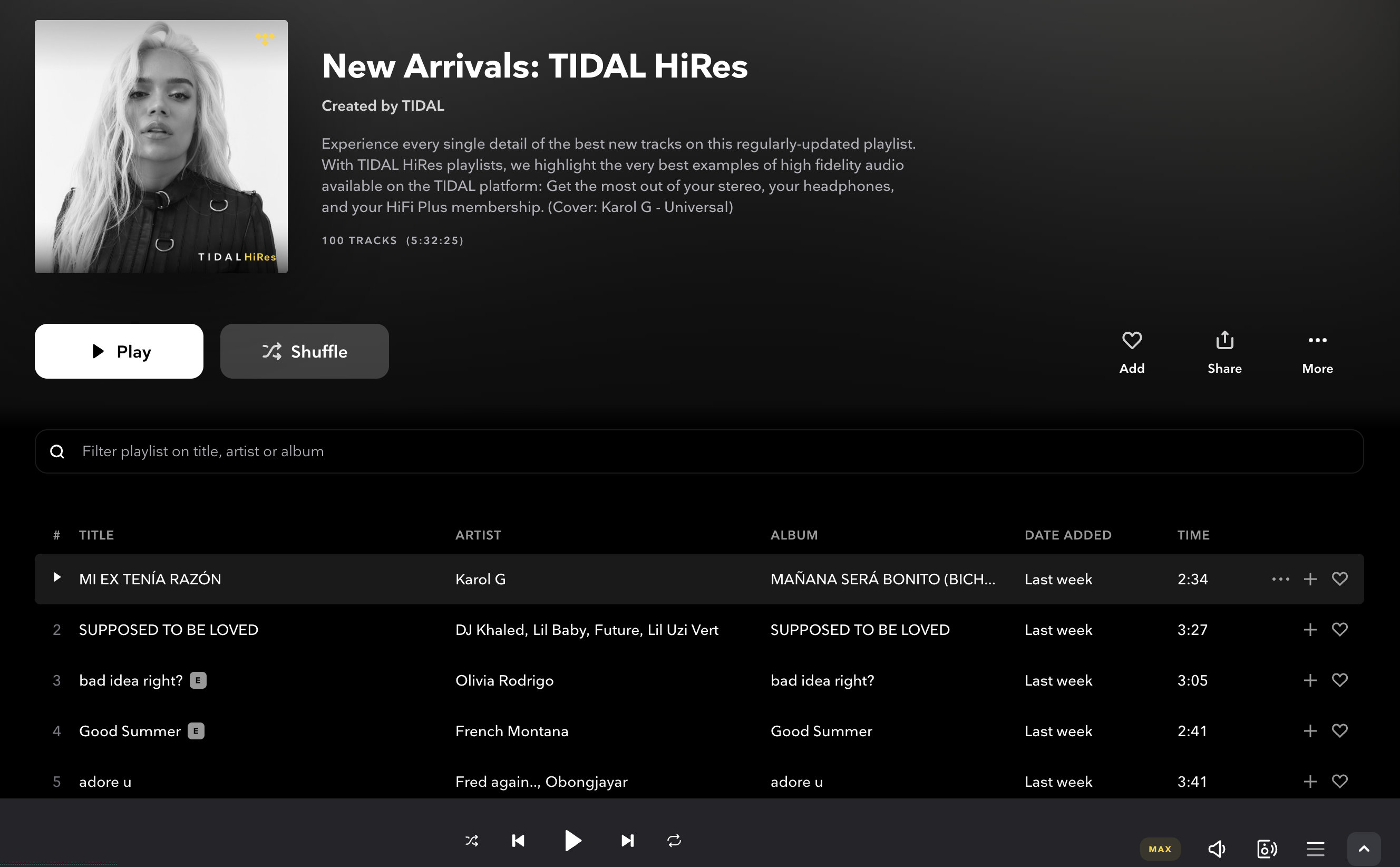
Tidal has confirmed to What Hi-Fi? the streaming playback hierarchy now that hi-res FLAC files have been added to its library.
When Tidal CEO Jesse Dorogusker announced in April that the service would add hi-res FLAC streaming to the existing hi-res MQA streaming catalogue, he stated that Tidal was “choosing FLAC as our preferred format for high-resolution audio” over its MQA-powered Masters. It makes sense, considering FLAC is an open-source format whereas MQA requires specific hardware decoding to unlock its optimum quality and is therefore not as accessible. Perhaps unsurprisingly, that preference for FLAC (or 'HiRes FLAC', as it's being called) is now being reflected in the service's playback priority.
Currently, HiRes FLAC (FLAC streams with a 24-bit/48-192kHz bitrate) is supported by Tidal's iOS, Android, desktop and web applications, with support for Tidal Connect, Chromecast and Sonos due to follow later this year. The playback hierarchy through these supported applications is as follows: HiRes FLAC > MQA > standard FLAC > ACC. That is also the case if an MQA-supporting DAC is used within the audio set-up so long as Tidal is in exclusive mode (whereby Tidal itself determines the output preference).
As Tidal Connect supports MQA, the playback hierarchy for now is MQA if available, or standard FLAC if not available. Presumably, HiRes FLAC will be the preference for Connect playback when support is eventually added. The Sonos and Chromecast platforms do not support MQA and so will only support hi-res streaming via FLAC.
Earlier this month, Tidal initiated the rollout of its HiRes FLAC library, delivering six million hi-res FLAC streams to subscribers of its HiFi Plus tier via the majority of its applications.
MORE:
MQA has gone into administration: what does this mean for Tidal and supported products?
Best music streaming services 2023: free streams to hi-res audio
Qobuz is slashing the price of over 10,000 albums – and you don't even need to be a subscriber to benefit







